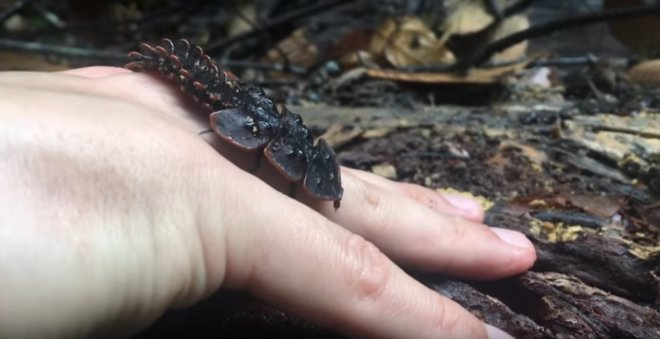
Sometimes you get more than what you ask for. This is what happened to local Ecologist Mark Wong who was looking for ants in a Singapore forest.
During his expedition, the ecologist came across a strange looking specimen which he was about to dismiss as a piece of fungus.
But to his surprise, the fungus started moving and that was when he realised that he discovered a trilobite beetle- an extremely rare prehistoric-looking beetle.
The video of the slow-moving female beetle took the internet by storm and garnered 4.9 million views by Monday morning. The video was first uploaded onto the Entomological Network of Singapore's Facebook page on Sept 12 and it was then featured on the National Geographic Facebook page on 13 November, reported The Straits Times.
"Finding even one is an encouraging sign that the species is still around and reproducing in our local forests," said Wong, as reported.
Here is all that scientists know till date about this insect:
- This species was discovered in the 1800s
- Scientists have only seen these beetles mating twice in history – once in 1924 and again in 1993.
- The male beetles are about a tenth of the female's size and also look different.
- The male beetles, which look like a simple winged-beetle, took a century to get discovered by scientists and are only seen while mating, with a female and never alone.
- The females, on the other hand, don a complex look. Their shell-like structure is due to the fact that they retain their larval form throughout life and can retract their heads into the shell like a tortoise.
- Trilobite beetles, which scientist believe came into existence nearly 47 million years ago, derives its name from an extinct armoured sea creature known as trilobites.
Check this fascinating video of the beetle crawling on Wong's hand:
Video credit: National Geographic








